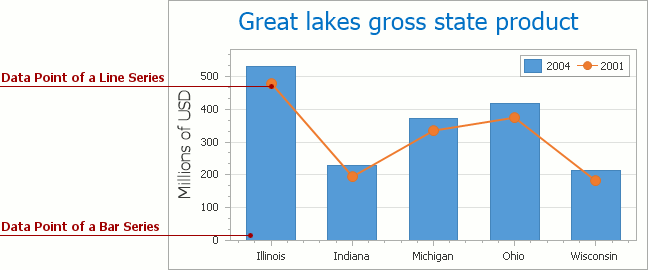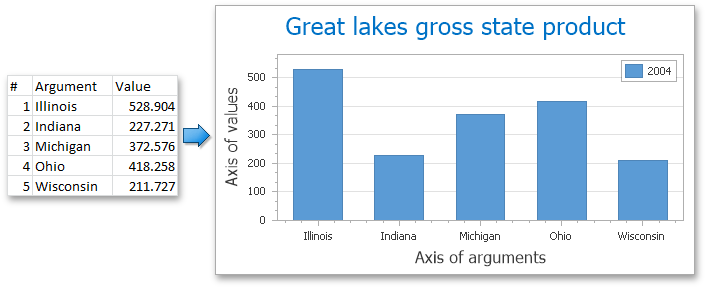Understanding a Data Point, Its Argument and Its Value
- 2 minutes to read
This topic provides general information about a chart’s data point, and explains its argument and value(s).
A chart’s most fundamental element is the data point. A group of data points represents a single series. Points are contained in the Series.Points collection, and no series is displayed until it has at least one data point specified.
Because the ASP.NET Chart Control supports numerous series view types, which represent and organize data in different ways, the visual representation of a data point differs from one view to another. For details on view types, refer to the following help topic: Understanding Series and Series Views.

Each data point must have one argument and at least one value that corresponds to it. In general, the pairing of an argument and its value is represented on a diagram’s axes as their X and Y coordinates, respectively, as illustrated in the following image.

Additional values are required by certain view types (e.g., Financial and Bubble series). They are visually represented differently, depending on the view type.
A chart’s Legend helps you identify different chart elements such as series, the constant line and strips. In some situations, the chart’s legend can display distinct data points that belong to the same series, rather than the name of the series itself. For details on a chart’s legend, refer to the following help topic: Legend Overview.
For details on how to create data points, see the following help topic: Manually Add Points to a Series.
For more information on series data points, refer to the following help topic: Series Points.